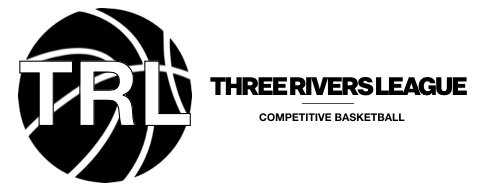LEAGUE RULES:
Each team receives 4 timeouts per game (2 60-second, 2 30-second).
Girls 4th and 5th – May shoot from 12 feet
Boys 4th – May shoot from 12 feet
Boys 5th – Shooting from standard 15 feet
If a team is ahead by 20 or more points in the second half, game moves to running clock format. If point spread drops below 20, stop clock resumes.
• Continuing game until its conclusion (with running clock still in effect);
• Recording score at time as final score, then playing remainder of game (running clock) with score set to 0-0; or
• Ending game.
Backcourt Defense:
Boys and Girls grades 4-5: No backcourt defense until final minute of 4th quarter/overtime. Only trailing team can guard in backcourt.
All other levels: If a team is ahead by 20 or more points at any time in the game, the team that is ahead may not guard in the backcourt. If point spread drops below 20, team may resume guarding in backcourt.
Man-to-Man Defense Rules: Grades 4-5 (boys and girls) are man-to-man only. 6-8th grade (boys and girls) can be mix of zone or man-to-man.
For 4th and 5th grade in Backcourt or Outside 3-point Line (in frontcourt):
Defensive players may guard their man only. No double teams, no help, no switching. Defenders may come off their man to grab loose ball or intercept pass once pass is made. Defenders may not hover away from man looking for passes or to guard ballhandler who beats their man. Defenders may leave man to get back inside 3-point to defend against fast break.
Inside 3-Point Line:
When the ball goes inside the 3-point line, defensive players may leave their man to help guard the ball, even if it results in a double team, or rotate to guard a player without the ball (i.e. help the helper).
Halfcourt Defense:
When all 4 offensive players without the ball are in legitimate offensive positions (i.e. stationed around the 3-point line or closer), all defensive players must stay within approximately 8 feet of their man unless they leave man to help as described above.
Treatment of Violations:
When violations of rules occur, referees should only stop play if violation results in turnover by offensive team. Offensive team will regain ball, inbounding at spot nearest to where violation occurred. When referees spot violations that do not immediately impact play (e.g. off-ball defensive player camped under basket instead of guarding man), they can inform defender of violation instead of stopping play, as often happens with 3-seconds in key (e.g. “Number 32, find your man”).
Intent of Man-to-Man Rules
• To make rule consistent from game-to-game instead of dependent on differing definitions of man-to-man vs. zone by individual coaches and referees.
• To encourage coaches to teach sound man-to-man defensive principles (e.g. see ball and man at all times; help protect basket when it is threatened; don’t chase ball all over court).
• To teach players, when ball changes possession, to either pick up their man or get back to protect basket (not chase ball in backcourt).
• To avoid forcing referees to make subjective judgments regarding whether a defender is “helping” (OK) or “trapping” (not OK). This will now be determined by the location of the ballhandler.
• To keep game moving and stop game only when violation of rules creates advantage for the defense (e.g. forces a turnover).
Playtime per player:
4-5th grade (boys and girls), each player should receive equal playing time, typically 16:00 (2 quarters) per game.
6-8th grade (boys and girls), each player should receive a minimum of 8:00 (1 quarter) per game.
Each team should print out a roster and deliver to the official scorebook prior to the game. This roster should not fluctuate during the season. You cannot rotate a 16 man roster where 1 team plays TRL games and a second team rotates in during non-tournament opportunities.
Grade Level:
An individual player can play UP a grade, but cannot play down a grade. Once that player has played up, they must stay. This includes playing on different skill level (bronze, silver, gold). A player can be called "up" to an upper skill level, but cannot play "down".
In some circumstances, whole teams can play against older teams if there are not enough teams in their grade or skill level to round out a full season. This is done with the approval of the Three Rivers League Board. They will remain in their grade division in this case.
